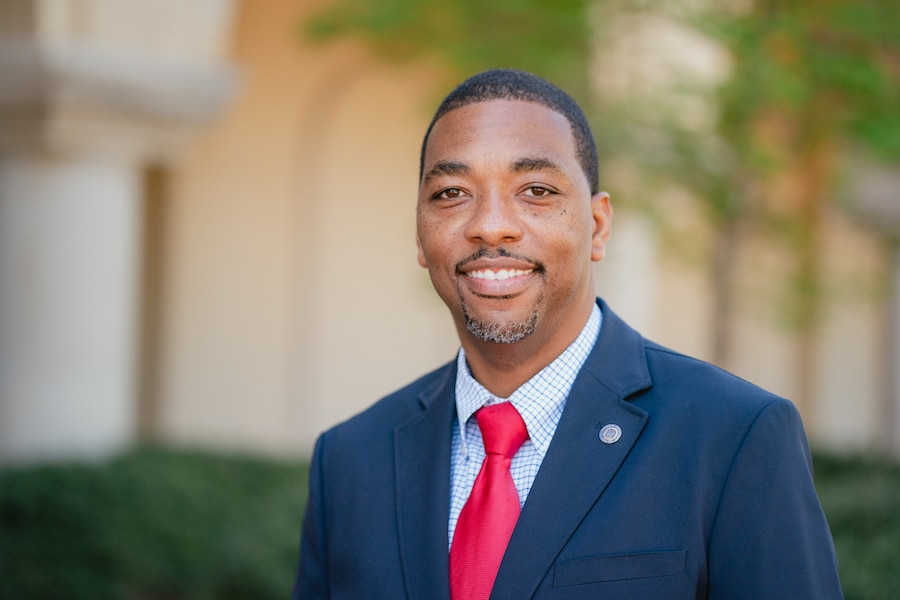On Oct. 31, 1517, an Augustinian monk named Martin Luther took hammer and nail to affix a list of theological concerns to a church door in the small German town of Wittenberg. He simply wanted to discuss these “95 Theses” with his colleagues at the university, but little did he know that his criticisms of the Catholic Church’s selling of indulgences would lead to a theological revolution spanning continental Europe and beyond.
While this pivotal moment is generally referred to as the start of the Protestant Reformation, Luther was not the first to call for reforms within the Catholic Church. In centuries prior, many notable voices such as John Wycliffe and John Hus called for a return to the Scriptures and cried against the moral corruption within the papacy as well as unbiblical doctrines and practices that permeated the Catholic Church.
Luther’s 95 Theses attacked the practice of selling indulgences—written certificates promising forgiveness of sins and release from purgatory. The Pope had authorized the sale of indulgences in order to raise money for the construction of St. Peter’s Basilica in Rome. Because Luther had become convinced through his study of Scripture that salvation was by grace through faith alone, he rejected the works-based salvation espoused by Catholic doctrine. Ultimately, his attacks on indulgences carried with them implications not just related to personal salvation but also clerical abuse, the sale of spiritual goods, the doctrine of purgatory, and most importantly the authority of the pope.
When someone translated Luther’s theses into the common vernacular of German, copies were printed and distributed throughout the country and struck a chord with throngs of people dissatisfied with the corruption and oppression in the Catholic Church. Instantly, Luther became a national hero, the poster child for someone standing against papal abuse.
Several months later, when Luther was invited to defend his views, he bypassed the issue of indulgences and addressed larger theological concerns such as original sin, free will, grace, and the distinction between law and gospel. His criticisms of the church’s doctrines drew the ire of Pope Leo X, and he was called to retract his statements and to submit to the pope’s authority. He refused to recant, stating that Scripture was the ultimate authority.
Eventually, at a disputation in Leipzig in the summer of 1519, Luther debated his views with Johann Eck, a theologian from Ingolstadt who had published theses against Luther. The exchange between the two was explosive and led many to condemn Luther as a heretic.
The following year, Luther’s boldness increased as he published four provocative books that vehemently rejected the pope’s spiritual authority, including claims that only the pope could reliably interpret Scripture and call church councils. Instead, Luther argued, Christ is the head of the church and the mediator of salvation, not the pope. In addition to calling for a long list of practical reforms, Luther also attacked the sacramental system. Again, these works were translated into German and widely circulated, increasing the popularity and acceptance of Luther’s convictions.
Pope Leo responded with an edict giving Luther 60 days to recant or else be excommunicated from the church. In an act of public defiance, Luther burned the papal bull at a bonfire in Wittenberg, causing the pope to issue the statement of excommunication.
In April 1521 in the town of Worms, Luther was brought to trial and once again called to renounce his writings and criticisms against the pope and the Catholic Church, to which he offered his famous reply: “Unless I am convinced by the testimony of the Scriptures or by clear reason (for I do not trust either in the pope or in councils alone, since it is well known that they have often erred and contradicted themselves), I am bound by the Scriptures I have quoted, and my conscience is captive to the Word of God. I cannot and will not recant anything, since it is neither safe nor wise to go against conscience. … Here I stand. I can do no other. God help me. Amen.”
Luther was immediately excommunicated, declared a heretic and a criminal. For fear of his safety, he was kidnapped by some friends on his way home from Worms. They brought him to Wartburg Castle, where he spent nearly a year in seclusion but used that providential time to produce many works, including his most significant—translating the Greek New Testament into German so the common man could read it. The New Testament was published in 1522 and experienced immediate, widespread success as the people were able to read the Bible for themselves. In 1534, he completed his translation of the Old Testament into German as well.
Eventually, Luther returned to Wittenberg, where he continued to write and teach the foundations of the Reformation, such as justification by faith alone, priesthood of all believers and the supreme authority of the Bible. His colleague at the University of Wittenberg, Philip Melanchthon, helped systematize Luther’s theology and served as an interim leader in the reform movement while Luther was in Wartburg Castle.
Through Luther’s influence, reform movements gained momentum across Europe, as Protestant churches abolished indulgences, closed shrines, changed liturgy, abandoned images and relics, and examined the Scriptures to address theological and ecclesiological concerns.
Echoes of Reformation Throughout Europe
While Luther deserves praise for his boldness as a lightning rod for the Reformation, in reality he was one of many religious leaders calling for a return to scriptural principles during the 16th century. Not long after Luther’s hammer pounded out the clarion call for reformation in Germany, ripples of the rising Reformation reached the rest of Europe as the theological tide began to change. A new day dawned in theological discussion as men explored the Scriptures and dared to reconsider the validity of Catholic theology and practice.
Reformation ideals flourished in Zurich, Switzerland, under the strong leadership of Ulrich Zwingli, who sought to enact Reformation principles through a unity of church and state. Zwingli championed the Reformation tenet of sola Scriptura by abandoning the lectionary to preach straight from the Scriptures in an effort to return the church to its apostolic roots.
As a means of discipleship, Zwingli gathered a group of young, educated laymen to study the Bible in the original languages. Eventually, though, this study produced questions regarding the sacraments of communion and baptism. Questions over infant baptism arose, and although Zwingli defended the practice, his students sought to be true to Scripture and pressed further. These men proceeded to break from Zwingli and became the first Swiss Anabaptists—precursors of modern-day Baptists—who championed believer’s baptism, discipleship and evangelistic zeal even in the face of persecution and martyrdom.
In Strasbourg, France, a Dominican priest named Martin Bucer, who became acquainted with the works of Erasmus and Luther during his studies at the University of Heidelberg, Germany, worked tirelessly to unify the movement and helped write a number of important Reformation documents. As a prominent Reformation leader in Strasbourg, Bucer emphasized genuine conversion, piety and
discipline.
Elsewhere in Switzerland, French lawyer John Calvin—who studied with Bucer for three years in Strasbourg—served as one of the most brilliant theological minds of the Reformation in the city of Geneva. Calvin’s famous Institutes of the Christian Religion systematized Reformation doctrine and stands today as a monument of biblical interpretation. Through his writings and church reform, Calvin was quickly recognized as a primary leader of the Reformation.
Reformation even reached the shores of the British Isles. Archbishop of Canterbury Thomas Cranmer was a prominent leader in the Church of England. Though his reform efforts were limited under King Henry VIII, he brought Anglicanism into the Protestant fold more fully under Edward’s reign. He wrote the first two editions of the Book of Common Prayer as well as the Church of England’s statement of faith known as the Thirty-Nine Articles.
Further north, John Knox instituted Reformation principles in Scotland through his fiery preaching and writing. He introduced a Presbyterian model and helped write the Scots Confession of Faith and the Book of Common Order.
In the Netherlands, Menno Simons led a Dutch Anabaptist movement with his teachings on discipleship, personal holiness and nonviolence. His influence was so great that many of his followers came to be called “Mennonites.”
These early leaders were just a few of the pastors and laymen who propelled Europe into the Reformation. And the ripple effects of their contributions can still be felt today. Five hundred years later, the echoes of Luther’s hammer can still be heard, impacting evangelicals’ understanding of salvation, the authority and sufficiency of Scripture, the nature of the church and the need for doctrinal fidelity.














